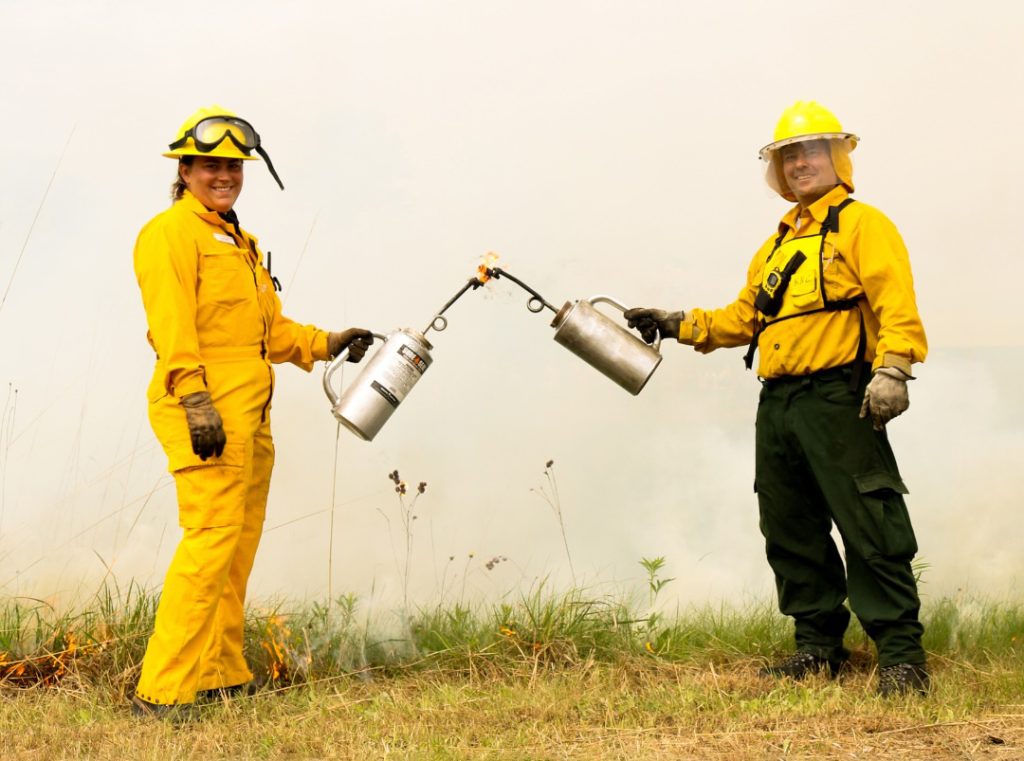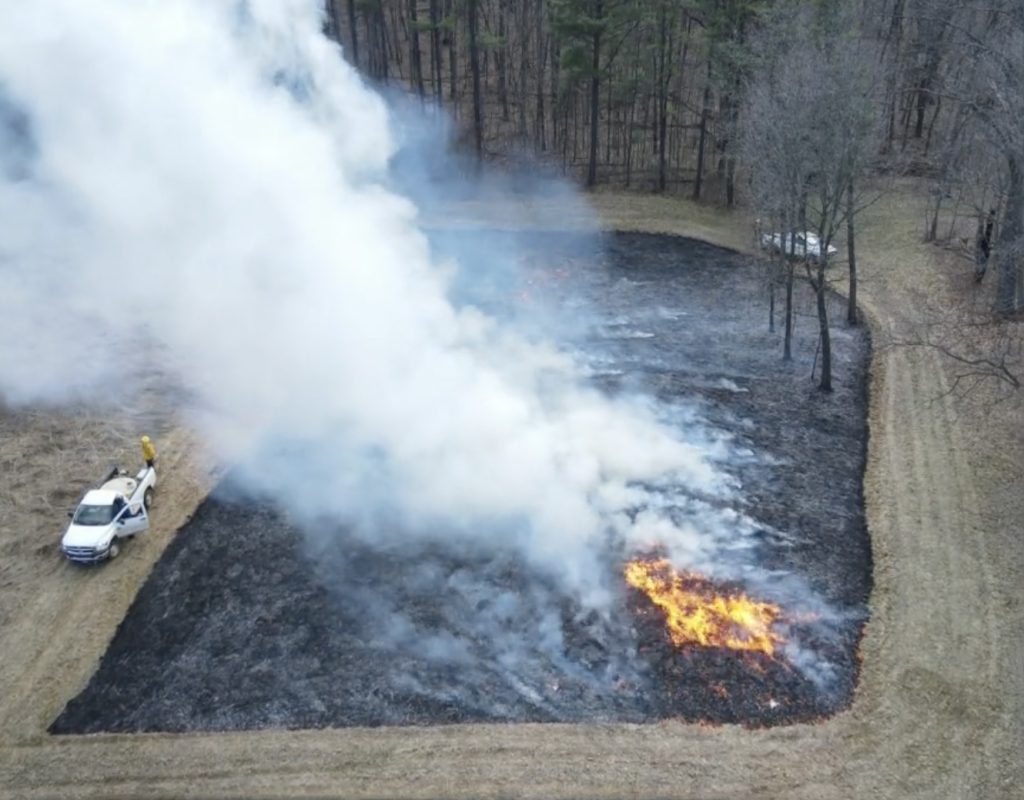
Researchers from Grand Valley State University (GVSU) have been conducting a multi-year study to see how seasonal timing and sequence of prescribed burns may affect restored prairies. This marks the first research in the Great Lakes region to investigate multiple rounds of seasonal burns and compare repetitive fire treatments with alternating ones.
“Land managers typically conduct prescribed burns in the spring,” says Todd Aschenbach, a GVSU professor of ecology and evolutionary biology, who led the study. Yet historically, fire occurred at different times of the year when it was conducted by Indigenous people or the handiwork of Mother Nature via lightning, So, the rising question among restoration ecologists and land managers: Does mixing up burns produce better results?
Maximizing the effectiveness of prescribed burns is important for prairies, which have become an endangered habitat. Indeed, southwest Michigan once had 2.5 million acres of tallgrass prairie. Today only 2% of this acreage remains, and without burning it will degrade, transforming into savannas or woodlands and becoming more exposed to invasive species.
Up to now, little research has been conducted on the seasonality of prescribed burns. And what studies do exist were conducted in different geographies and climates, yielding inconsistent results. With that in mind, GVSU researchers picked two restored prairies in southwest Michigan: six acres at Big Rock Valley (BRV) and 10 acres at the Kalamazoo Nature Center (KNC). Located 50 miles apart, these sites shared similar characteristics in terms of soil, plant composition, average precipitation, date of restoration (2006 and 2011 respectively), and burn frequency (about every three years.)
At both prairie sites, the researchers created five sections, each measuring 25 square meters. One section served as a control group, and the others were used for four different fire regimes:
- Spring only
- Late summer only
- Spring, followed by late summer
- Late summer, followed by spring

Prior to burning, the researchers measured existing plant composition and biomass to establish baseline data. Then they burned the four plots in 2021, followed by a second round of burns in 2023. One year after each respective burn, researchers returned to the prairies to collect data.
An ambitious project, nine GVSU undergraduate students assisted with field and lab work. Data collection was especially challenging, says Mary Parr, a graduate student who did her master’s thesis on the study. Indeed, more than 400,000 data points had to be transferred from handwritten notes into Excel spreadsheets. “Yet it was also rewarding,” Parr adds. “You learn to recognize different plants at every stage of life, including whether they are living or dead.”
After crunching the numbers, researchers found their most consistent takeaways were for overall plant diversity. Regardless of when the burns took place or whether the timing was repetitive or random, the fire boosted plant diversity. One surprise was that the greatest increases came with repetitive seasonal burns rather than alternating ones: Plant diversity increased 16.3% with the spring-only burns and 18.3% with late summer-only burns.
Results for plant communities and individual species varied:
- In most cases, wildflowers increased following all fire treatments.
- Warm-season grasses and invasive cool-season grasses had inconsistent results that were both site- and species-specific.
- Dominant plant species, such as goldenrod, big bluestem and wild bergamot, had significant changes in cover, but the changes were often associated with a specific site.
“Diversifying fire season and order can enhance plant diversity in restored tallgrass prairies, but outcomes are often influenced by site-specific variables,” says Parr. “This reinforces the message that land managers need to be observational both before and after a burn, to see if their objectives for the plant community are being met and then adapt accordingly.”
The study also sheds light on next steps for continued research, such as having a more universal metric for the timing of burns. “Spring and later summer are subjective terms and don’t adequately record the growth stage of an individual plant,” Parr explains.
Another recommendation would be to find sites with even greater similarities. Although BRV’s topography was similar to KNC, the two sites had different histories. At BRV, the restored prairie was originally used as a pasture while KNC was an agricultural site, so their preexisting seed banks could have been different.
“This experiment has been going on for four years, quite a long time in terms of an experiment, but not really that long in nature,” says Aschenbach. “As the project continues, it will be interesting to see if these sites retain their individual responses to fire or eventually reflect similar responses to fire regardless of site location.”